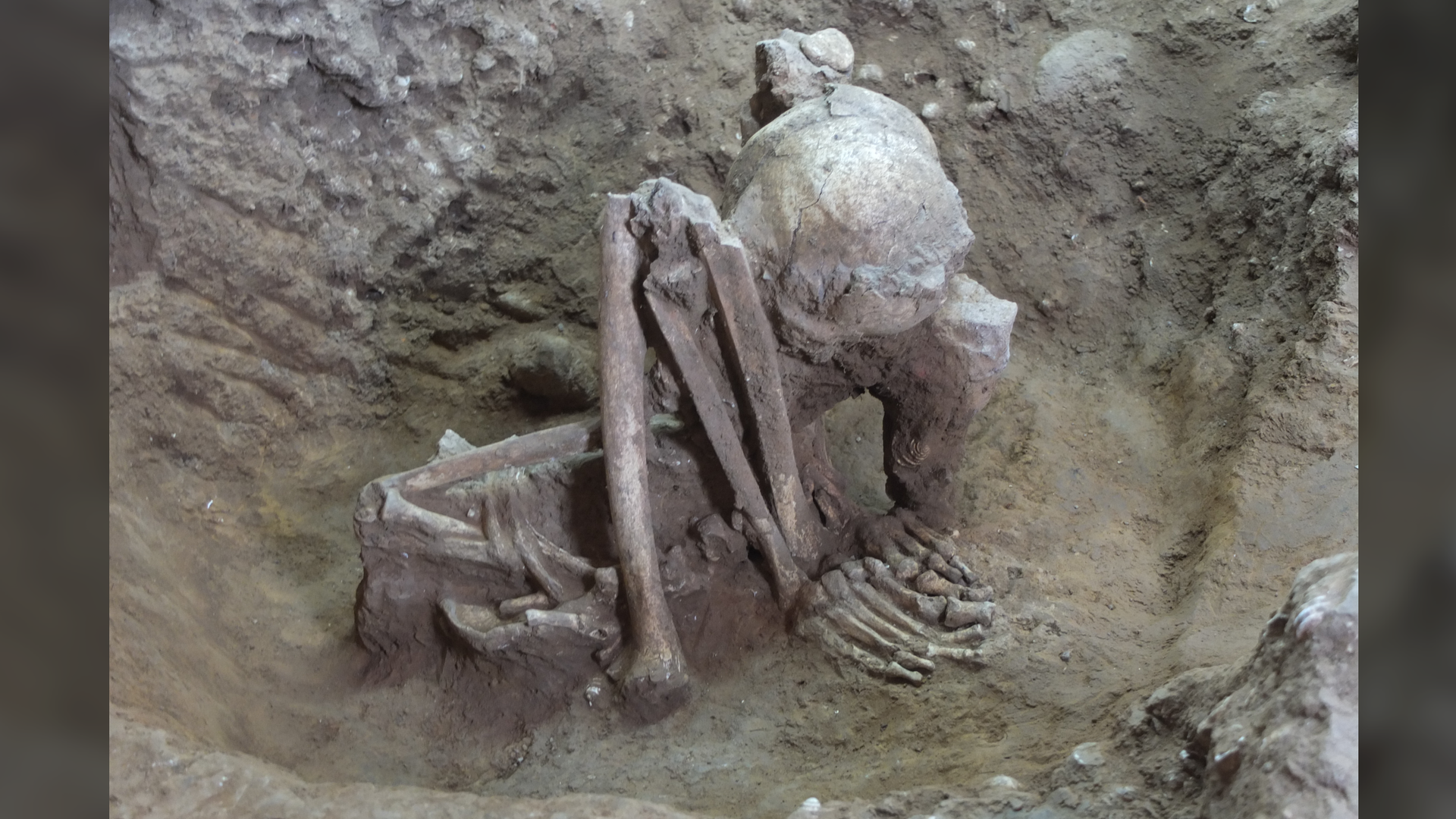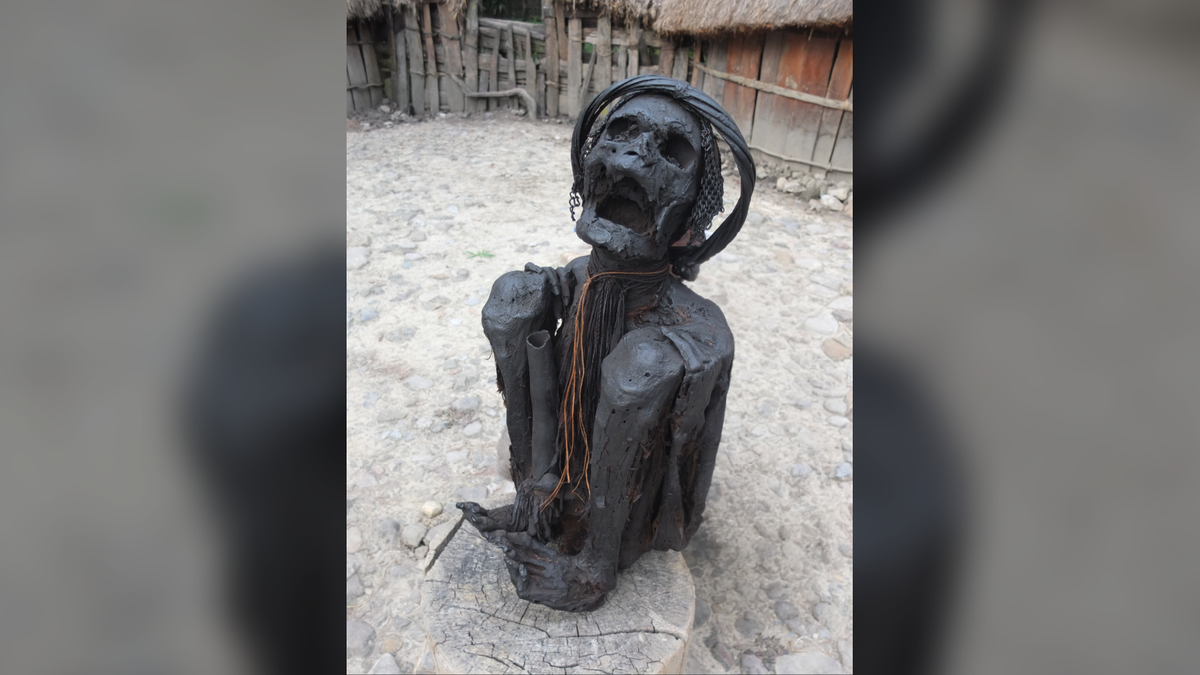Follow us on Google News (click on ☆)
About 10,000 years ago, in China and Southeast Asia, human groups practiced mummification through smoking, a method that predates the known mummifications in Chile or Egypt by several millennia. Far from being merely utilitarian, this practice appears to have carried strong spiritual and cultural significance.
Recent research, published in PNAS, analyzed dozens of burials discovered in China, the Philippines, Laos, Thailand, Malaysia, and Indonesia. The skeletons, often placed in a tightly flexed fetal position, show traces of gentle heating and soot deposits. These clues indicate that the bodies had been exposed to smoke from fires maintained for long periods, well before their burial. Researchers used non-destructive methods, such as X-ray diffraction and infrared spectroscopy, confirming that these were not cremations but rather an elaborate funerary treatment.

Remains of a middle-aged man mummified and buried over 9,000 years ago in China.
Credit: Yousuke Kaifu and Hirofumi Matsumura
According to Hsiao-chun Hung, the study's lead researcher, this process likely had ritual and symbolic value as much as a preservation function. The smoke allowed the deceased to remain visible among the living, materializing social and spiritual bonds within the communities. In the hot and humid climates of Southeast Asia, smoking effectively slowed decomposition, but only for a few decades or centuries, unlike Egyptian mummies designed to last millennia.
This tradition has not completely disappeared. Some communities in Indonesia, such as the Dani and Pumo, still practice it today. In 2019, researchers observed the process: bodies are tightly bound, exposed to smoke from low-temperature fires, and blackened until they become rigid. These current practices strongly resemble prehistoric methods and suggest a cultural continuity spanning several thousand years, perhaps originating from accidental experiences during rituals or inspired by techniques used to preserve animal meat.

Modern smoked mummy of the Dani people in Papua (Indonesia).
Credit: Hirofumi Matsumura and Hsiao-chun Hung
These discoveries also support the so-called "two-layer migration" model in Southeast Asia. This model proposes that the region was first populated about 65,000 years ago by hunter-gatherers, followed by a second wave of migrants, Neolithic farmers, who arrived about 4,000 years ago with new social and technological practices. Funerary traditions like smoking mummification thus appear as valuable cultural markers for tracing these human histories.
Ivy Hui-Yuan Yeh, an independent anthropologist, emphasizes that these results fit into current models of ancient human migration. They suggest that smoking mummification is much older and more widespread than previously thought, perhaps emerging as early as the first expansions of Homo sapiens out of Africa, about 42,000 years ago.
Smoking mummification: an ancestral technique
Smoking mummification involves exposing a body to smoke from fires maintained at low temperatures. The heat and smoke slowly dehydrate tissues and limit bacterial action, thereby delaying decomposition. Unlike Egyptian mummification, which relies on the use of chemicals like natron, this method is based on simple physical phenomena, accessible even to societies without advanced technologies.
In tropical regions, where heat and humidity accelerate putrefaction, smoking represented an effective solution. But its implementation required great mastery of fire to avoid complete combustion. This know-how therefore had to be carefully transmitted and repeated within communities.
Today, archaeologists identify these practices through traces such as carbon deposits on bones. Ethnographic observations, meanwhile, show the persistence of this technique, providing concrete clues about the methods used in prehistory.